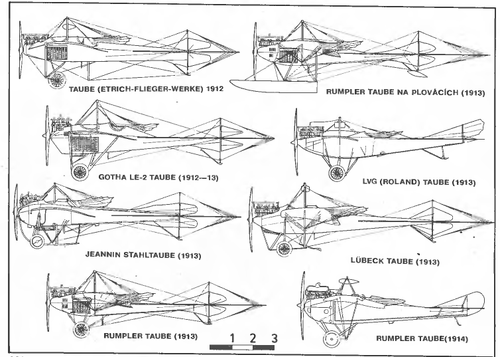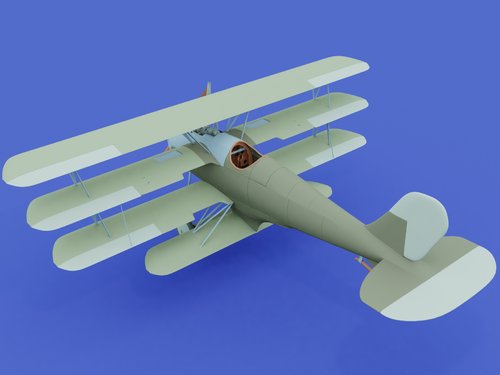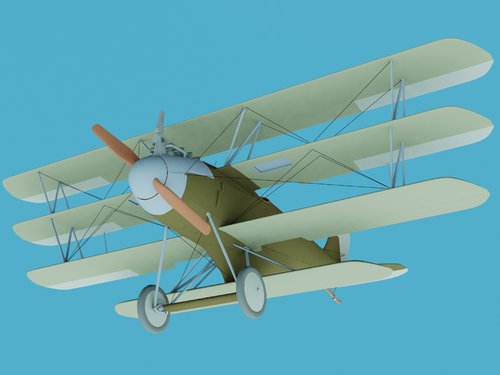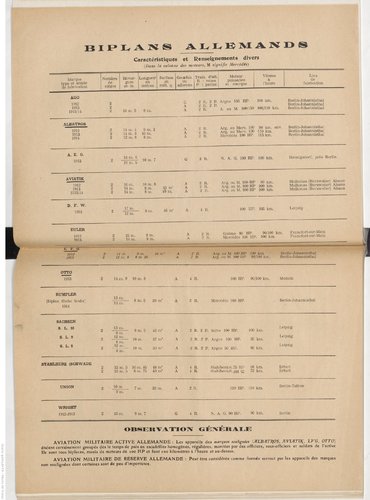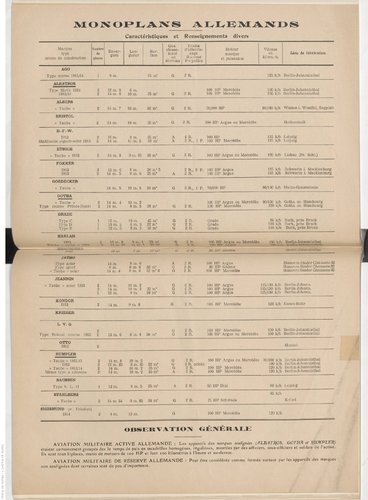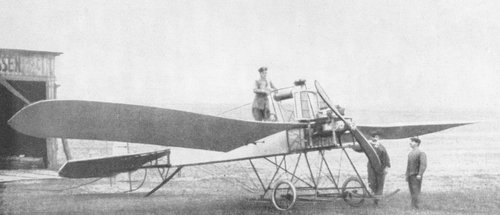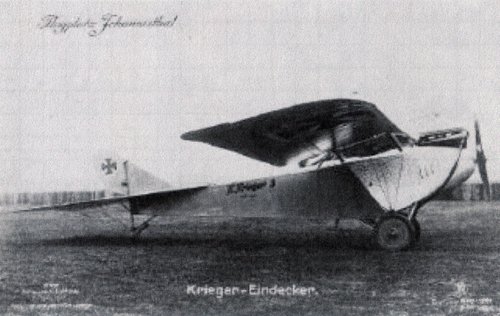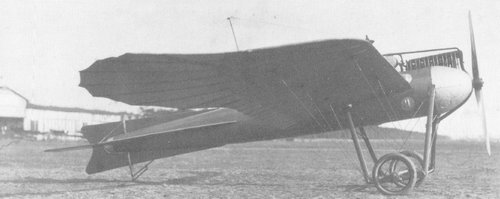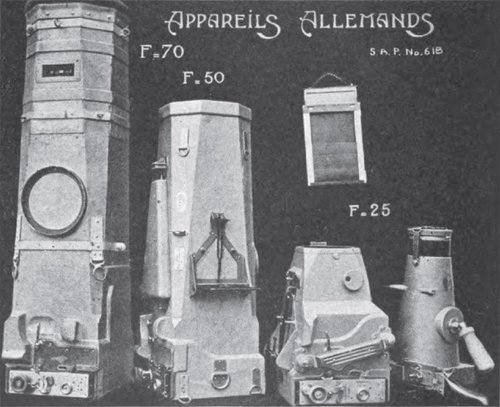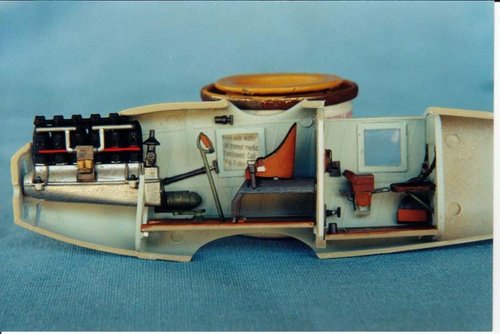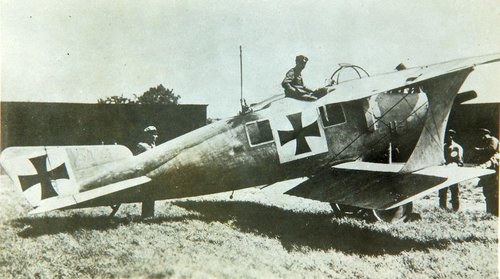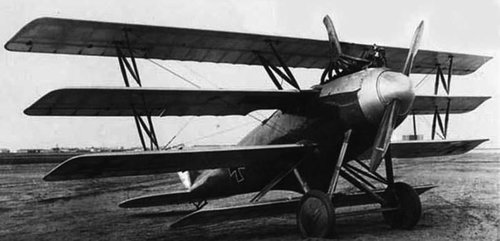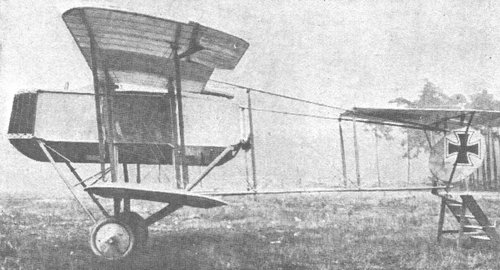You are using an out of date browser. It may not display this or other websites correctly.
You should upgrade or use an alternative browser.
You should upgrade or use an alternative browser.
German WW1 Fighters and Recce Aircraft Prototypes and Projects
- Joined
- 26 May 2006
- Messages
- 34,814
- Reaction score
- 15,696
hesham said:and as I know the DFW C.IV had a three different variants.
They are C.IV T.25,C.IV Avro and C.IV F.37.
richard B
ACCESS: Secret
- Joined
- 17 August 2006
- Messages
- 343
- Reaction score
- 498
SO FAR I KNOW : (but I don't know much about the D.F.W ...)
The DFW C.IV was a "normal" C. type , very similar to the later well known DFW C.V .
The T.25 was described as C.IV in the Gray & Thetford and Wagner & Nowarra 's books , but I think it is not right .
The T.29 looks like a C.IV / C.V with single bay wings. ( // or I )
The F.37 was the C.VII .
The DFW C.IV was a "normal" C. type , very similar to the later well known DFW C.V .
The T.25 was described as C.IV in the Gray & Thetford and Wagner & Nowarra 's books , but I think it is not right .
The T.29 looks like a C.IV / C.V with single bay wings. ( // or I )
The F.37 was the C.VII .
richard B
ACCESS: Secret
- Joined
- 17 August 2006
- Messages
- 343
- Reaction score
- 498
hesham said:but F.37 was allocated to C.IV.
I am pretty sure : the F37 was C.VII for the army , later the civil (with cabin for three passengers) DFW P.I . (What is your source for C.IV / F37 ?)
richard B
ACCESS: Secret
- Joined
- 17 August 2006
- Messages
- 343
- Reaction score
- 498
Yes , Lange wrote "C IV (F 37)" and "F37 III (modified C IV)" , but the pictures of the C VII , P I , and F 37 all show a different plane with short fuselage , tall fin&rudder and no more V shaped horizontal tail surfaces .hesham said:Maybe, Typenhandbuch der deutschen Luftfahrttechnik
richard B
ACCESS: Secret
- Joined
- 17 August 2006
- Messages
- 343
- Reaction score
- 498
There was only one Friedrichshafen Vierdecker , the FF 54 , designed by Diplom-ingenieur van Grieß . It was flown late in 1917 .
It was unsuccessful , and modified several times ; At last , it crashed in summer 1918 , killing its pilot .
For some sources it was in 1918 modified as a Dreidecker (bottom fuselage wing deleted) , but watching the three pictures I know , it seems that only the wing-tips , outside the struts , were deleted )
It was unsuccessful , and modified several times ; At last , it crashed in summer 1918 , killing its pilot .
For some sources it was in 1918 modified as a Dreidecker (bottom fuselage wing deleted) , but watching the three pictures I know , it seems that only the wing-tips , outside the struts , were deleted )
Tuizentfloot
ACCESS: Secret
- Joined
- 9 May 2010
- Messages
- 270
- Reaction score
- 152
A late reaction about the DFW F 37.
Concerning the F 37 conflicting information exist. On the one hand "F 37 = C IV" (Lange, Typenhandbuch …), and the record breaking F 37/III was a re-engined C IV. On the other hand "F 37 = C VII" (eg. Nowarra). I limit myself to German authors.
About DFW there is other conflicting information. T 25 is often considered as the in-house designation of the C IV (eg. Kroschel, Militärflugzeuge …). For Lange and Nowarra (Entwicklung …) the T 25 was an experimental single bay C-type, designed by Dorner. The dimensions given by Nowarra are smaller than those of the C IV.
In my very humble opinion the assumption F 37 = C VII is the correct one. As earlier said by richard B photographs of the C VII show a short fuselage and a tall fin and rudder. Completely different from the C IV.
Only … it is not 100% sure that the designation C VII ever existed…
In 1918 DFW apparently didn't use any longer the in-house designation "T", but instead used "F" (F 34, F 37). So, the identity of the 1918 type F 37 with the C VII seems logical.
And why a C IV should have been used to re-engine for a 1919 record-breaking flight? The C IV was an "old" 1916 type, built in small numbers.
Conclusion: This is not the end of DFW mysteries. But that's the charm of early German aviation.
Concerning the F 37 conflicting information exist. On the one hand "F 37 = C IV" (Lange, Typenhandbuch …), and the record breaking F 37/III was a re-engined C IV. On the other hand "F 37 = C VII" (eg. Nowarra). I limit myself to German authors.
About DFW there is other conflicting information. T 25 is often considered as the in-house designation of the C IV (eg. Kroschel, Militärflugzeuge …). For Lange and Nowarra (Entwicklung …) the T 25 was an experimental single bay C-type, designed by Dorner. The dimensions given by Nowarra are smaller than those of the C IV.
In my very humble opinion the assumption F 37 = C VII is the correct one. As earlier said by richard B photographs of the C VII show a short fuselage and a tall fin and rudder. Completely different from the C IV.
Only … it is not 100% sure that the designation C VII ever existed…
In 1918 DFW apparently didn't use any longer the in-house designation "T", but instead used "F" (F 34, F 37). So, the identity of the 1918 type F 37 with the C VII seems logical.
And why a C IV should have been used to re-engine for a 1919 record-breaking flight? The C IV was an "old" 1916 type, built in small numbers.
Conclusion: This is not the end of DFW mysteries. But that's the charm of early German aviation.
Tuizentfloot
ACCESS: Secret
- Joined
- 9 May 2010
- Messages
- 270
- Reaction score
- 152
Unfortunately no idea...
- Joined
- 26 May 2006
- Messages
- 34,814
- Reaction score
- 15,696
Tuizentfloot said:Unfortunately no idea...
Thank you my dear Tuizentfloot,
and what about Germania Type C (KDD) ?.
richard B
ACCESS: Secret
- Joined
- 17 August 2006
- Messages
- 343
- Reaction score
- 498
https://www.sdtb.findbuch.net/php/view.php?ar_id=3750&link=56492e312e303036x1048&path=c76bf76bdd6dd5dcdddcecc76bf7dc3a383d36fcc1d0f63f3a30fec76bf763dac7e0c7e1e1e3c16e383fc7c1d830373f36c76bf763dac7e0c7e1e1e3c1e1e0e1e6efc739f13f#&path=c76bf76bdd6dd5dcdddcecc76bf7dc3a383d36fcc1d0f63f3a30fec76bf763dac7e0c7e1e1e3c16e383fc7c1d830373f36c76bf763dac7e0c7e1e1e3c1e1e0e1e6efc739f13f
Tuizentfloot
ACCESS: Secret
- Joined
- 9 May 2010
- Messages
- 270
- Reaction score
- 152
The KDD (KampfDoppelDecker) was certainly an experimental C-type, but no other designations are known.
Tuizentfloot
ACCESS: Secret
- Joined
- 9 May 2010
- Messages
- 270
- Reaction score
- 152
And B II also called B.15.
No explanation, unfortunately.
No explanation, unfortunately.
- Joined
- 26 May 2006
- Messages
- 34,814
- Reaction score
- 15,696
Tuizentfloot said:And B II also called B.15.
No explanation, unfortunately.
Thanks.
Vahe Demirjian
I really should change my personal text
- Joined
- 28 February 2013
- Messages
- 815
- Reaction score
- 570
Now I know what the Naglo D.II looked like. Are there any photos of the D.II prototype (serial number 1165/18)?In the meantime I found this drawing of a Naglo biplane, apparently the D II biplane.
See https://www.facebook.com/pages/Naglo-Bootswerft-Aircraft/222598187820258
144printsdev
ACCESS: Restricted
- Joined
- 4 November 2019
- Messages
- 2
- Reaction score
- 5
hesham said:the Naglo D.I was a single seat quadruplane fighter (1161/18),actually built.
Maybe a Naglo D.I speculative drawing.
Log into Facebook
Log into Facebook to start sharing and connecting with your friends, family, and people you know.www.facebook.com
Oh... Many memories came back watching that profile... I've made a 3D model of that Naglo, some yeras ago, using the drawing that mr. Backus sent to me... here there are a pair of (really very, very, very basic) renders I did.
Attachments
- Joined
- 26 May 2006
- Messages
- 34,814
- Reaction score
- 15,696
for Schütte-Lanz company,was there a two designs of seaplane aircraft or not ?.
Also anther Mysteries came today,from Aerophile 1915,
I found those unknown designers; Sachsen (maybe related to Albatros ?) and Krieger ?.
Attachments
Maveric
Fight for yor Right!
- Joined
- 14 January 2007
- Messages
- 2,227
- Reaction score
- 851
Karl Krieger is good known. He built his airplanes at Johannisthal by Berlin. Born 1885 at Krefeld.
K.K.1 from 1910 Monoplane
K.K.2 from 1911 Monoplane
K.K.3 from 1912 a Taube-Type
K.K.4 from 1913 a racing monoplane
K.K.5 from1913 Monoplane
Torpedo-Lancier-Flugzeug Triplane with floats Project
Krieger shut down his workshop in 1915 and became an acceptance pilot in the Germania factories in Leipzig, where he crashed on August 30, 1918 for an unknown cause.
K.K.1 from 1910 Monoplane
K.K.2 from 1911 Monoplane
K.K.3 from 1912 a Taube-Type
K.K.4 from 1913 a racing monoplane
K.K.5 from1913 Monoplane
Torpedo-Lancier-Flugzeug Triplane with floats Project
Krieger shut down his workshop in 1915 and became an acceptance pilot in the Germania factories in Leipzig, where he crashed on August 30, 1918 for an unknown cause.
- Joined
- 25 July 2007
- Messages
- 4,297
- Reaction score
- 4,183
and I know the Halberstadt A.I called E.14,A.II called F.14 and B.1 called A.15,what was this designation series ?.
Those were internal designations applied by the Halberstädter Flugzeugwerke GmbH ... versus the official Idflieg designation applied for Luftstreitkräfte use.
There is conflicting information, however. According to Kites, Birds & Stuff by P. D. Stemp (and airwar.ru), E14 was the internal designation for licensed DE Stahltaubes used by the Halberstadt flying school (the Halberstadt Taubes being requisitioned in 1914 as A I recce aircraft). But most sources say that E14 referred to the Idflieg's A II - a Halberstadt licensed Fokker M 8.
Most sources also say that Idflieg designation Halberstadt A I was applied to another version of the Fokker M 8. Oddly, this A I was a follow on to Halberstadt's A II. K.W. Jonker listed "F.14" as Halberstadt's designation for the A II. If he was right, that leaves us with the A I/E14 puzzle. Was it a Halberstadt Taube or a Halberstadt-built Fokker M 8? Or, less probably, was the Halberstadt A I designation repeated by Idflieg?
(Repetition seems improbable. Indeed, the Halberstadt B15 shows a reverse trend. That internal B15 was retained for two engine types which Idflieg distinguished between as the Halberstadt B II and B III.)
Another wrinkle is that the A I (M 8) may have followed the A II (M 8). K.W. Jonker mentioned wooden-fuselage construction for the Halberstadt A II (vs Fokker's welded steel-tube structure). I wonder, is it possible that this A I was a follow-on because Halberstadt - despite its earlier Stahltaube experience - was struggling with steel-tube techniques, and thus first adopted a more familiar wooden construction for their A II version?
The early Halberstadt-designed biplanes are less confusing:
Halberstadt A15 = Idflieg B I biplane, 80 hp Oberursel U.0 rotary
Halberstadt B15 = Idflieg Halberstadt B.II biplane, 105 hp Mercedes D I inline
Halberstadt B15 = Idflieg Halberstadt B.III biplane, 120 hp Mercedes D II inline
-- Internal B15 designation unchanged for higher-powered B III version
One presumes that Halberstädter Flugzeugwerke continued to apply internal designations to its designs but I haven't seen any corporate style designations mentioned in the context of their later aircraft types.
richard B
ACCESS: Secret
- Joined
- 17 August 2006
- Messages
- 343
- Reaction score
- 498
Are you sure ?Krieger Types
The first one is usually identified as the first type built at the works of the "Prinz Friedrich Sigismund von Preußen" which was flown by Krieger ... I don't know the part of Krieger in its design .

Der Prinz, der Flugzeuge baute...
war Prinz Friedrich Sigismund von Preussen, * 17.12.1891 Schloss Klein-Glienicke + 06.07.1927 Luzern/ Schweiz. Der Prinz war Flugzeugführer ...
Here the KK2 (note the triangular section fuselage) :
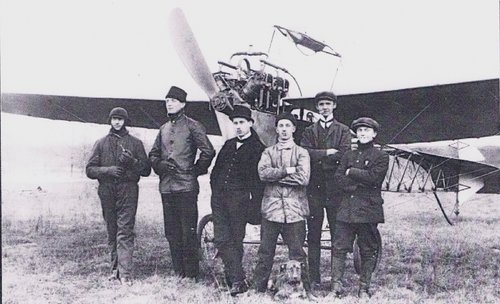
Your KK3 is actually the KK5 built in 1913/4
Here the KK3 :
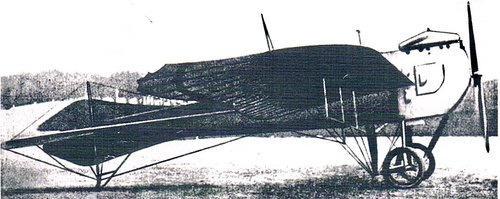
- Joined
- 29 July 2009
- Messages
- 1,767
- Reaction score
- 2,456
German cameras of WWI:
"The Central Powers used many different aircraft but especially Rumpler and Albatros types mounting Görz and ICA cameras. The Germans used also a standard 70 cm focal length and 13×18 cm plates. The radio-equipped unarmed photoship Rumpler C.VII (Rubild) — for Rumpler-Bildflugzeug (picture-aircraft)[4] — distinguished itself for long-range and high-altitude, reaching 21,000 feet. Unusual recon aircraft included the armored Junkers J.I for low-level flights, the gigantic long-range Ilya Muromets from Russia, and the high-performing (at well over 200 km/h top speed) Italian Ansaldo SVA, considered nearly uninterceptable. Italy standardized on the simple 24-plate Lamperti camera.
German optics was overwhelmingly superior, as exemplified by Carl Zeiss lenses and optical glass. The Allies had to quickly learn to make lenses especially for long foci. In the meantime they had to make do with such short-focus lenses as could be found. When the U.S. entered the war, the Army urgently requested that American civilians turn in their lenses and optics, including telescopes and binoculars, for aerial use, specifically naming several sought-after German manufactures. Cameras quickly became large and mechanically very complex. German and Italian cameras generally used 13×18 cm plates." (Source: https://en.wikipedia.org/wiki/Aerial_reconnaissance_in_World_War_I)
"The Central Powers used many different aircraft but especially Rumpler and Albatros types mounting Görz and ICA cameras. The Germans used also a standard 70 cm focal length and 13×18 cm plates. The radio-equipped unarmed photoship Rumpler C.VII (Rubild) — for Rumpler-Bildflugzeug (picture-aircraft)[4] — distinguished itself for long-range and high-altitude, reaching 21,000 feet. Unusual recon aircraft included the armored Junkers J.I for low-level flights, the gigantic long-range Ilya Muromets from Russia, and the high-performing (at well over 200 km/h top speed) Italian Ansaldo SVA, considered nearly uninterceptable. Italy standardized on the simple 24-plate Lamperti camera.
German optics was overwhelmingly superior, as exemplified by Carl Zeiss lenses and optical glass. The Allies had to quickly learn to make lenses especially for long foci. In the meantime they had to make do with such short-focus lenses as could be found. When the U.S. entered the war, the Army urgently requested that American civilians turn in their lenses and optics, including telescopes and binoculars, for aerial use, specifically naming several sought-after German manufactures. Cameras quickly became large and mechanically very complex. German and Italian cameras generally used 13×18 cm plates." (Source: https://en.wikipedia.org/wiki/Aerial_reconnaissance_in_World_War_I)
Attachments
richard B
ACCESS: Secret
- Joined
- 17 August 2006
- Messages
- 343
- Reaction score
- 498
Richard, thank you very much for your corrections.
Can you find a photo of Krieger's KK.1?
I would like to get one ...
Similar threads
-
-
Experimental ww1 fighters from Albatros and Siemens
- Started by T-50
- Replies: 12
-
Friedrichshafen Little Known Prototypes & Projects
- Started by hesham
- Replies: 16
-
LFG (Luft-Fahrzeug-Gesellschaft) Projects
- Started by hesham
- Replies: 21
-

